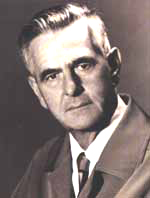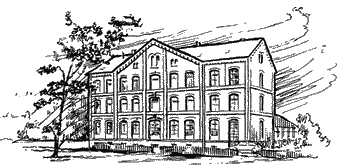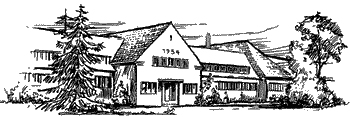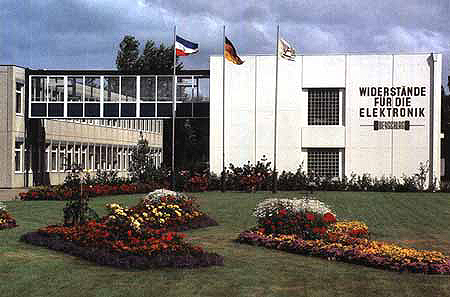Zu meinen Philips (Dr. Beyschlag GmbH.)-Seiten
To my pages about Philips (Dr. Beyschlag GmbH.)
In the 1960s, the company achieved a significant market share of the German consumer electronics market. Dr. Beyschlag had set the quality requirements for the resistors very high. He had foreseen the increasing importance and growth of professional electronics. In the 1960s, having long been part of the Philips Group in Eindhoven / Netherlands, the Beyschlag company brought out a particularly small resistor, the BB, which soon became known as the ¼ watt resistor, the CR25, accounted for more than 80% of production. In 1981, the "Harmonic Series" of metal film resistors was launched to the market. Using a high load ceramic, applications up to 1 Watt load were possible with only three sizes instead of the previous multitude of resistor types.

Bernhard Beyschlag (1900-1980), promovierter Physiker,
gründete sein Unternehmen im Jahr 1931. Die Herstellung von Gleichrichtern für Messinstrumente, später die Hinführung zum
Bauelement „Widerstand“ der Elektrotechnik war die unternehmerische Aufgabe. Der Weltkrieg unterbrach die
Produktion.
Bernhard Beyschlag (1900-1980), a doctor of physics, founded his company in 1931. The manufacture of rectifiers for measuring instruments, and later the introduction to the "resistor" component in electrical engineering was the entrepreneurial task. The world war interrupted the production.

Nach dem Kriegsende erfolgte ein Neuaufbau der Fabrikation in Hitzacker an der Elbe,
1948 und 1949 verlagerte Dr. Beyschlag die Produktion nach Möwenberg in List auf Sylt. Das leerstehende Gebäude bot sich als eine geeignete
Produktionsstätte an. Vielen aus der Lister Bürgerschaft ermöglichte diese Niederlassung, wenige Jahre nach Weltkrieg II, Arbeit und Lohn.
Aus Hitzacker hatten kenntnisreiche Mitarbeiter und deren Familien den Umzug in die nördlichste deutsche Gemeinde
mitgemacht.
After the end of the war, production was rebuilt in Hitzacker on the river Elbe. In 1948 and 1949, Dr. Beyschlag moved production to Mowenberg in List on the island of Sylt. The vacant building was a suitable production site. For many of the citizens of List, this establishment enabled a few years after World War II, work and wages. From Hitzacker employees and their families had made the move to Germany's northernmost community.

Die Produktion der Widerstände in ihrer vom Unternehmer geforderten und von den zuständigen Mitarbeitern realisierten Qualität nahm rasch zu. 1954 erfolgte aufgrund des wachsenden Umsatzes der Umzug nach Westerland auf Sylt, von wo aus die Deutsche Bundesbahn die angelieferten Produkte zum Festland transportierte, deren umständlicher Transport per LKW oder Inselschmalspurbahn von List zum Güterbahnhof nun weggefallen war. Die Firma wurde zu einer GmbH. Bald übernahm der Philips-Konzern das prosperierende Unternehmen. In Heide, Dithmarschen, entstand ein Zweigwerk. Nach einigen Jahren wurde, wegen ablehnender Genehmigung einer notwendig gewordenen Bauerweiterung im kurbetriebsfernen Nord-Westerland, das ganze Unternehmen nach Heide verlegt. Dort war diese Ansiedlung aus vielen Gründen, beispielsweise neue Steuereinnahme, beispielsweise hunderte neue Arbeitspläze, sehr willkommen. Das verkaufte Großareal auf Sylt war ebenfalls willkommen: Immer rarer werdendes Bauland, von ortsfremden Investoren heiß begehrt. Und schon entstand eine gewinnträchtige Groß-Ansiedlung, wenn auch nicht für Normalverdienende aus der Sylter Einwohnerschaft. Wie sollten von dort aus die Quadratmeterpreise bezahlt werden können.
The production of resistors in the quality required by the entrepreneur and realized by the competent employees increased quickly. In 1954, the company moved to Westerland on the island of Sylt, from where the German Federal Railway transported the products to the mainland, and the inconvenient transport by truck or narrow-gauge railroad from List to the freight station was no longer necessary. The company became a limited liability company. Soon the Philips Group took over the prospering company. In Heide, Dithmarschen, a branch plant was established. After a few years, due to a refusal of approval of a necessary enlargement of the complex of buildings in North Westerland, far away from the spa, the whole company was moved to Heide. There this settlement was very welcome for many reasons, for example new tax income, for example hundreds of new jobs. The large area sold on Sylt was also welcome: Increasingly scarce building land, much sought after by non-local investors. And a profitable large-scale settlement was created, even if not for normal earners from the Sylt population. How could the square meter prices be paid from there.


1965 ist in
Heide/Holstein das Zweigwerk entstanden,
1974 Verlegung des Hauptwerk von Westerland nach Heide.
In 1965 the branch plant was established in Heide/Holstein, in 1974 relocation of the main plant from Westerland to Heide.
Achim Krumbiegel, who worked for Philips for over 40 years, including 26 years in relevant functions at Heide, published his photo book BEYSCHLAG in 2016, which describes the history of the company up to the year 2000 from the point of his view in the sphere of his activities with Beyschlag colleagues and Beyschlag customers. Furthermore, an interesting presentation of the development of the company can be found HERE.